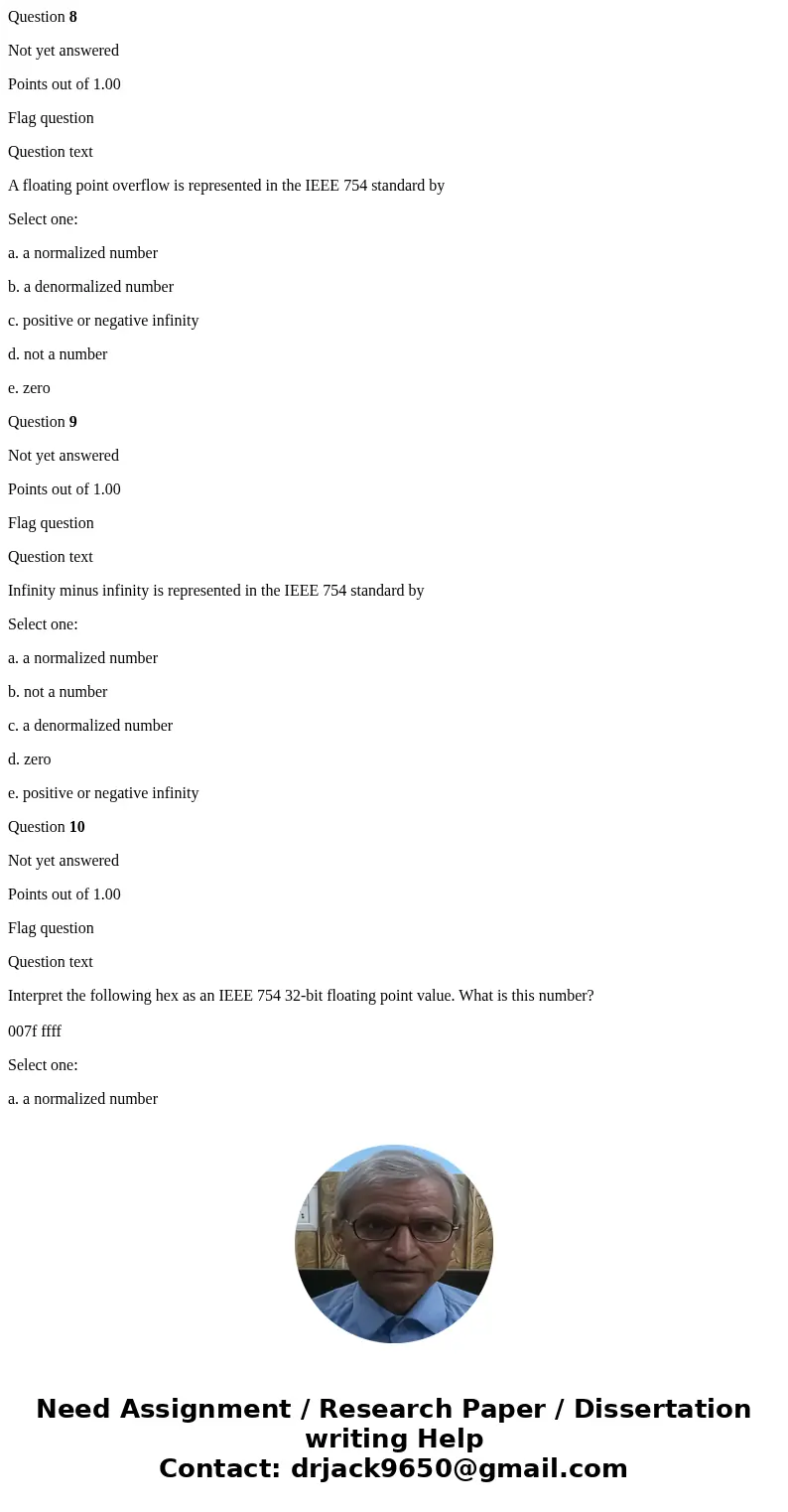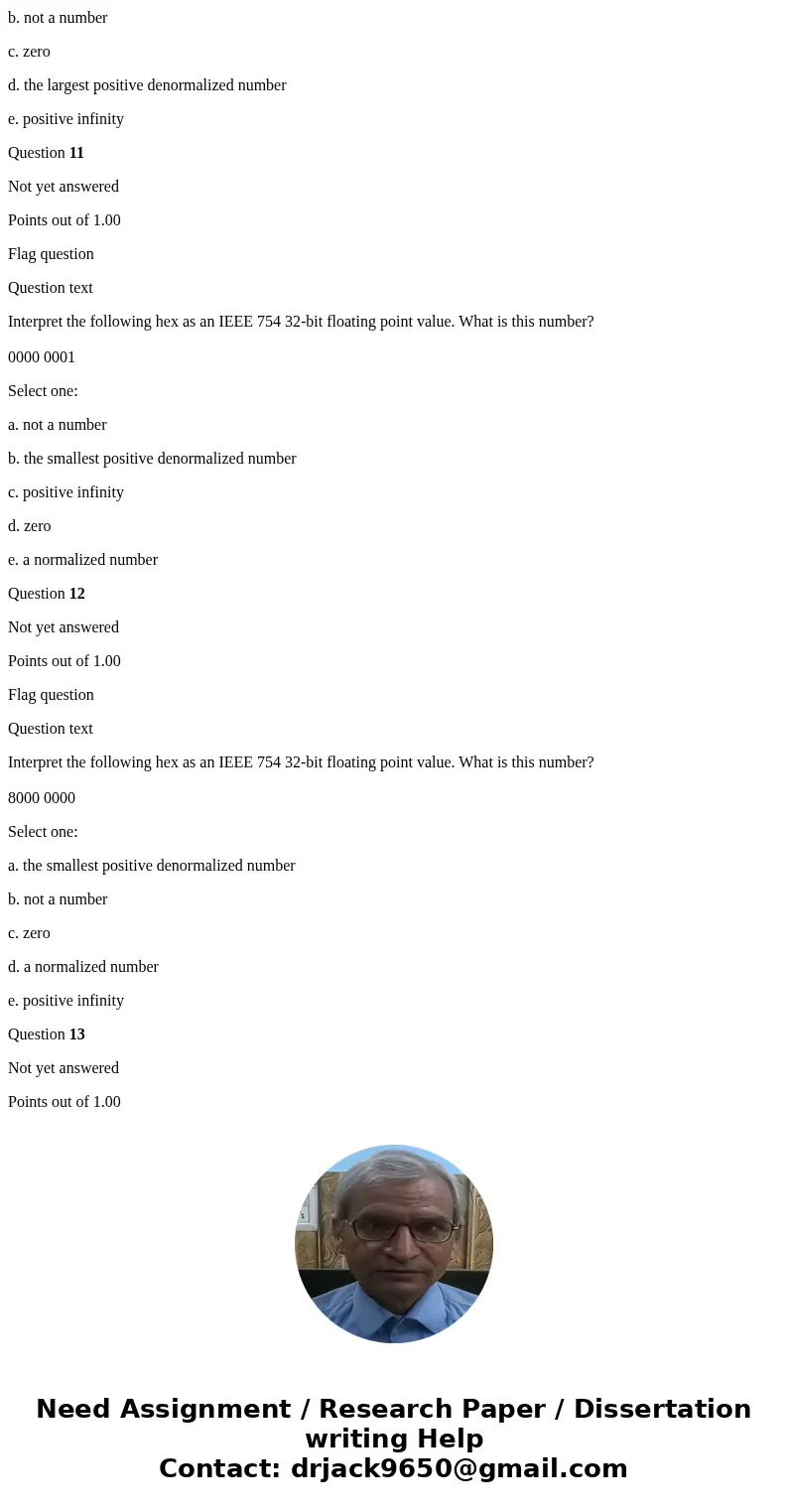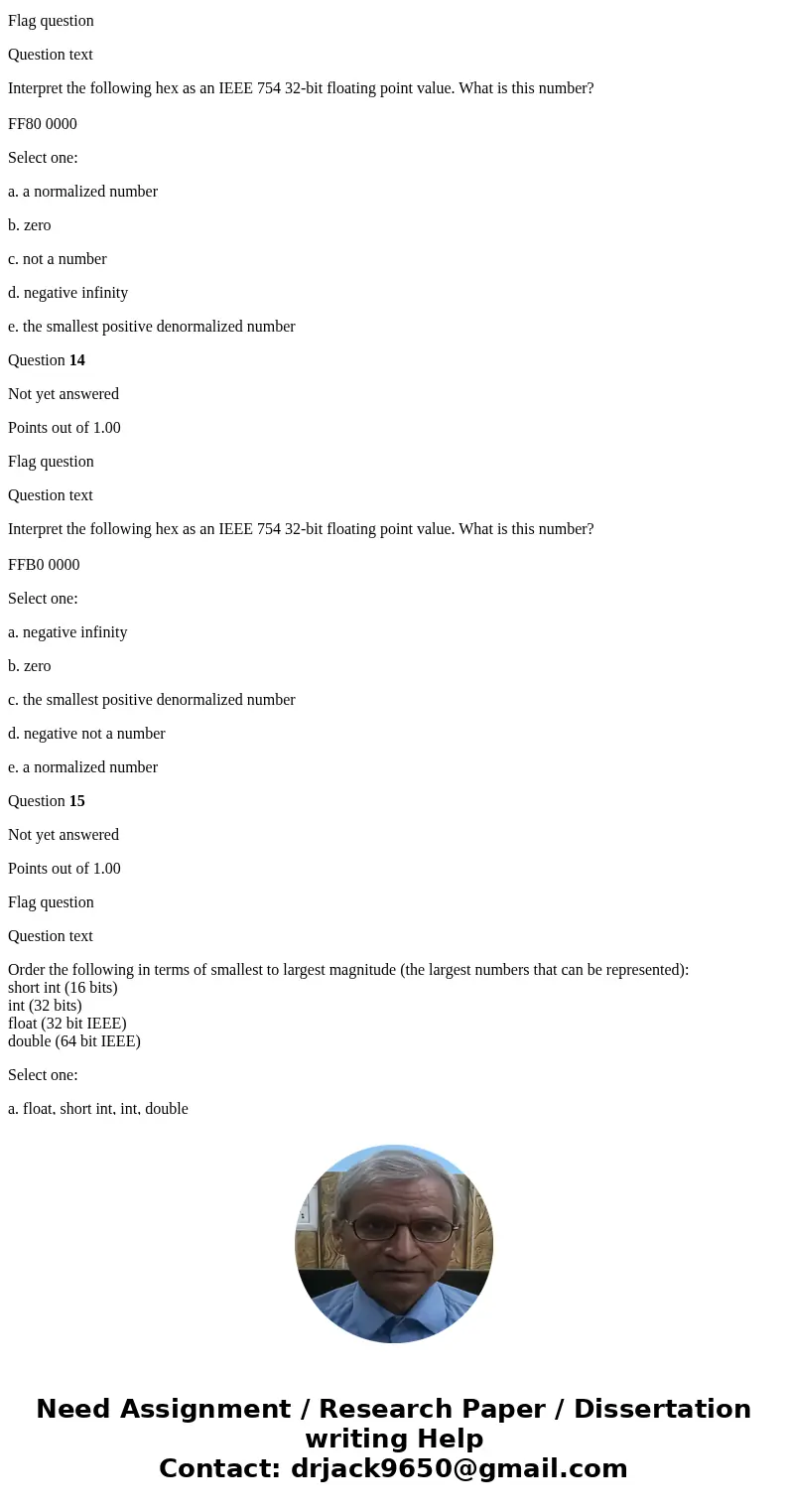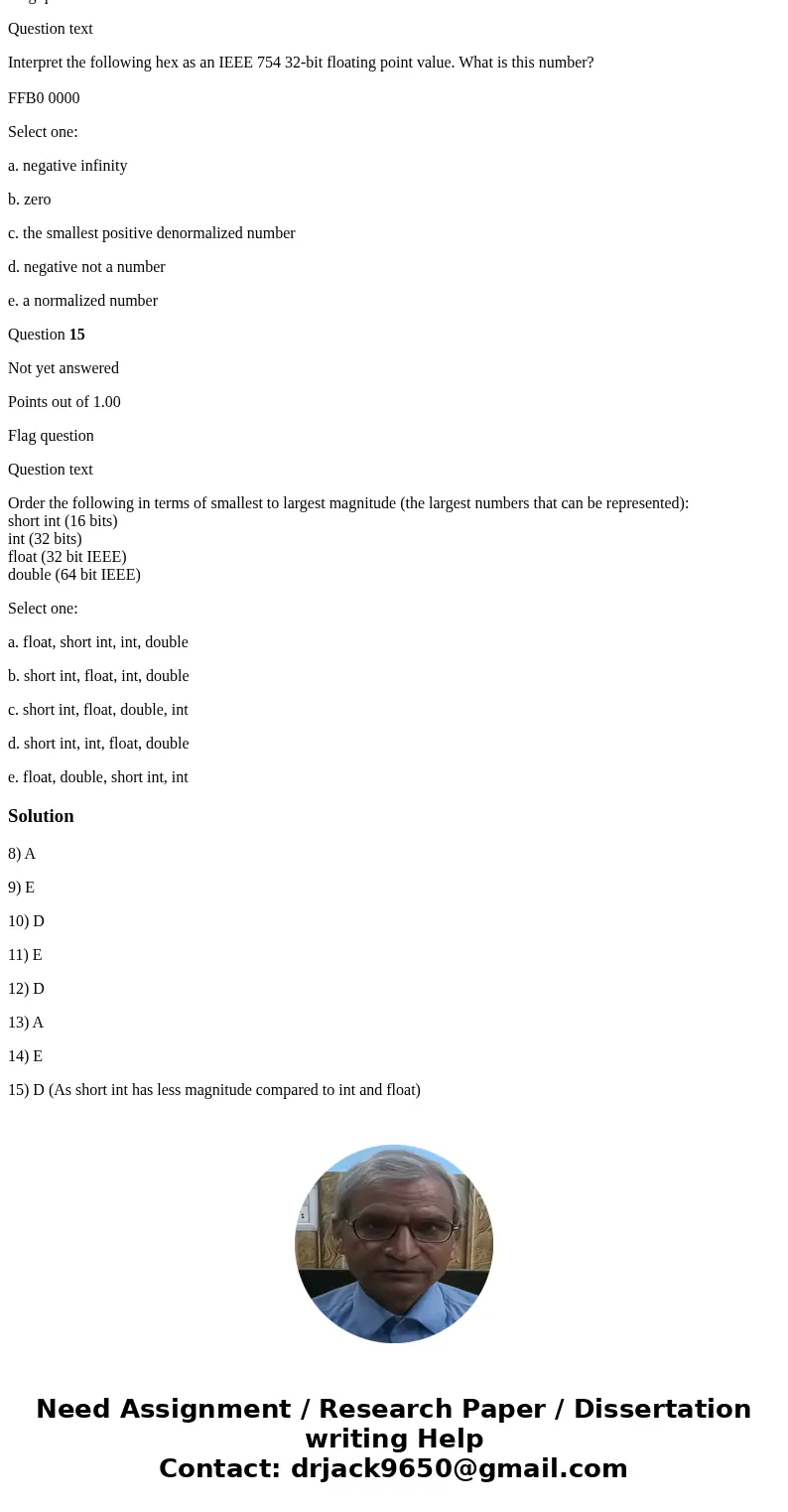Question 8 Not yet answered Points out of 100 Flag question
Question 8
Not yet answered
Points out of 1.00
Flag question
Question text
A floating point overflow is represented in the IEEE 754 standard by
Select one:
a. a normalized number
b. a denormalized number
c. positive or negative infinity
d. not a number
e. zero
Question 9
Not yet answered
Points out of 1.00
Flag question
Question text
Infinity minus infinity is represented in the IEEE 754 standard by
Select one:
a. a normalized number
b. not a number
c. a denormalized number
d. zero
e. positive or negative infinity
Question 10
Not yet answered
Points out of 1.00
Flag question
Question text
Interpret the following hex as an IEEE 754 32-bit floating point value. What is this number?
007f ffff
Select one:
a. a normalized number
b. not a number
c. zero
d. the largest positive denormalized number
e. positive infinity
Question 11
Not yet answered
Points out of 1.00
Flag question
Question text
Interpret the following hex as an IEEE 754 32-bit floating point value. What is this number?
0000 0001
Select one:
a. not a number
b. the smallest positive denormalized number
c. positive infinity
d. zero
e. a normalized number
Question 12
Not yet answered
Points out of 1.00
Flag question
Question text
Interpret the following hex as an IEEE 754 32-bit floating point value. What is this number?
8000 0000
Select one:
a. the smallest positive denormalized number
b. not a number
c. zero
d. a normalized number
e. positive infinity
Question 13
Not yet answered
Points out of 1.00
Flag question
Question text
Interpret the following hex as an IEEE 754 32-bit floating point value. What is this number?
FF80 0000
Select one:
a. a normalized number
b. zero
c. not a number
d. negative infinity
e. the smallest positive denormalized number
Question 14
Not yet answered
Points out of 1.00
Flag question
Question text
Interpret the following hex as an IEEE 754 32-bit floating point value. What is this number?
FFB0 0000
Select one:
a. negative infinity
b. zero
c. the smallest positive denormalized number
d. negative not a number
e. a normalized number
Question 15
Not yet answered
Points out of 1.00
Flag question
Question text
Order the following in terms of smallest to largest magnitude (the largest numbers that can be represented):
short int (16 bits)
int (32 bits)
float (32 bit IEEE)
double (64 bit IEEE)
Select one:
a. float, short int, int, double
b. short int, float, int, double
c. short int, float, double, int
d. short int, int, float, double
e. float, double, short int, int
Solution
8) A
9) E
10) D
11) E
12) D
13) A
14) E
15) D (As short int has less magnitude compared to int and float)




 Homework Sourse
Homework Sourse